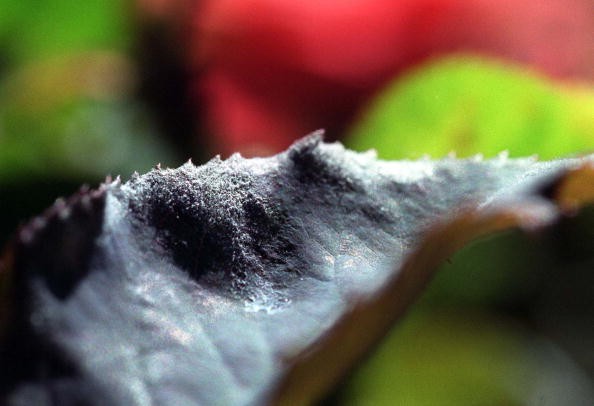One of the most significant cereal diseases has spread around the world as a result of human activities.
Researchers at the University of Zurich followed the development and dissemination of wheat powdery mildew via grain trade routes, and discovered that the genetic admixture of closely related powdery mildew species was crucial to the pathogen's evolution and adaption.
Agricultural conflict
 (Photo : Evi Radauscher/Unsplash)
(Photo : Evi Radauscher/Unsplash)

The loss of grain exports from Ukraine due to the war has brought attention to wheat's relevance for global food security, as per ScienceDaily.
Wheat is one of the most essential staple foods in the world.
However, fungal infections are an increasingly prevalent hazard to crops, which can cause hunger and financial losses.
Powdery mildew is one of the most harmful infections, and a fungus that significantly lowers crop production.
Huge quantities of money are presently being spent on the development of grain types resistant to mildew to prevent infection.
The pathogen must be a perfect match for its host to infect the crop plant; fungi cannot attack resistant kinds.
Nevertheless, powdery mildew quickly and continuously adjusts to new hosts.
It is critical that researchers better understand the pathogen if they are to be able to control the disease in the long run.
Because powdery mildew is as old as wheat itself, historical data are essential to understanding how it spread across other grains globally.
The key to the success of wheat mildew has now been discovered by a research team led by Thomas Wicker and Beat Keller of the University Research Priority Program (URPP) Evolution in Action at the University of Zurich.
They did this by contrasting the genetic makeup of 172 powdery mildew strains from 13 nations across five continents.
The Middle East, which is also the origin of agriculture and modern wheat, is where the mildew originally originated, according to investigations conducted by Alexandros Georgios Sotiropoulos, a Ph.D. candidate at the Department of Plant and Microbial Biology.
The virus was also transported to these new areas by human migration and commerce throughout the Stone and Bronze Ages.
Around 300 years ago, European invaders brought powdery mildew and wheat to North and South America.
According to the data, powdery mildew was transported with wheat and underwent hybridization along the way, which is to say that it was genetically mixed with local powdery mildew species to create hybrids that are better suited to local agricultural environments.
This confirmed what had previously been hypothesized.
According to Kentaro Shimizu, co-director of the URPP, this appears to be the reason for the powdery mildew's pathogenicity's fast development.
The several American wheat types that were imported to Japan over the last 120 years to breed with local East Asian wheat are a particularly stark illustration of this.
The powdery mildew from the United States, which was also imported, crossed with local Japanese mildew strains, and the resulting hybrids effectively combatted wheat varieties.
Also Read: Due to Global Warming, Infected Pine Trees Starts To Weaken While Fungi Became Aggressive
Powdery mildew
 (Photo : Phil Walter/Getty Images)
(Photo : Phil Walter/Getty Images)

A fungal disease known as powdery mildew can affect a wide range of plants.
This illness, which can be caused by many fungi, first manifests as white or grayish-white fuzzy or powdery patches on the upper surfaces of foliage, giving the impression that the leaves have been dusted with talcum powder or flour.
The mildew often develops on a plant's lower portions, although it can also develop on stems, buds, and fruit, as per Wyman's Home & Garden.
The plant becomes weaker as the infection progresses, and the leaves may become yellow or brownish, dry up, or even coil up twist, or change shape.
In addition to decreasing fruit and flower output, this disease can seriously affect harvests.
Powdery mildew can occasionally kill a plant, but this seldom happens.
The fungi that cause powdery mildew may also be found in dry climes, although they prefer warmer, more humid environments.
Since the disease's microscopic spores may squeeze through window screens and other small gaps, they can even spread to greenhouses or indoor plants.
While it can occur at any time when the correct circumstances are available, powdery mildew most typically emerges in the spring and fall.
Lightweight spores that are easily dispersed by winds or by infected hands or gardening equipment are how powdery mildew spreads.
To contain the illness, early action is required when powdery mildew is found in the yard.
It is crucial to remove and destroy any diseased plants, however, the plant waste should not be composted since this might spread the disease.
Instead, the plants have to be properly burnt or tightly packed before being disposed of to prevent the infection from spreading.
Powdery mildew may be effectively controlled by using the right fungicides. Applications of sulfur, neem oil, or potassium carbonate can be useful at getting rid of powdery mildew, depending on the specific fungus that is infected.
For minor problem areas, several home cures, such as using diluted milk, whey, or vinegar sprays, may also work.
However, for the greatest outcomes in using fungicides, make sure to follow all application guidelines and apply the products carefully and sensibly.
To make sure there are no residual spores to resume the infection, both the upper and bottom surfaces of the affected foliage should be treated, and sprays should be repeated often to prevent the spread of the illness.
Related article: Parasite Plant: Cheating Orchid Feeds Off Fungi Instead of Sunlight
© 2024 NatureWorldNews.com All rights reserved. Do not reproduce without permission.

![Tsunami Hazard Zones: New US Map Shows Places at Risk of Flooding and Tsunamis Amid Rising Sea Levels [NOAA]](https://1471793142.rsc.cdn77.org/data/thumbs/full/70325/280/157/50/40/tsunami-hazard-zones-new-us-map-shows-places-at-risk-of-flooding-and-tsunamis-amid-rising-sea-levels-noaa.jpg)



